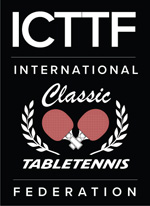Busy month ahead
One of our full-time coaches at the Maryland Table Tennis Center, Jeffrey Zeng Xun, is leaving Monday for a month in China. Sun Ting, who recently joined our staff, is also in China, also returning in about a month. I'm subbing for some of their students while they are away so it's going to be a busy month. (Pray for my back!) We'll be back at full strength around the start of February.
Around that time is when the wall to our club goes down and we take over the space next door to us, doubling the club's size. It'll probably be another month of renovations before everything's ready, and then we'll have 11,000 square feet, around 18-20 tables all on red rubber flooring, the bathroom that's currently in the middle of the club obstructing everything will finally be off to the side, and we'll have our new weight room. We'll also have a new modernized web page, and our new facebook page will be ready for action. Our coaching staff will then include me, Cheng Yinghua, Jack Huang, Jeffrey Zeng Xun, Sun Ting, Raghu Nadmichettu, and Donn Olsen.
Equipment Junkies: The Next Generation
Yesterday I was coaching a 10-year-old semi-beginner. Unfortunately, he'd forgotten his racket, which was a standard relatively slow beginner's blade with about 1.7mm Sriver on both sides. So he tried out mine - a fast carbon blade with space-aged sponge with built-in glue effect on both sides.
His first ten shots went way, Way, WAY off the end, with his eyes going wide like a pancake after the first one. But then he adjusted. It was like going from a sailboat to a nuclear-powered hydroplane. He loved the way the racket practically trampolined the ball back. He was literally clutching it to his chest, saying "I'm keeping this!"


 Photo by Donna Sakai
Photo by Donna Sakai




